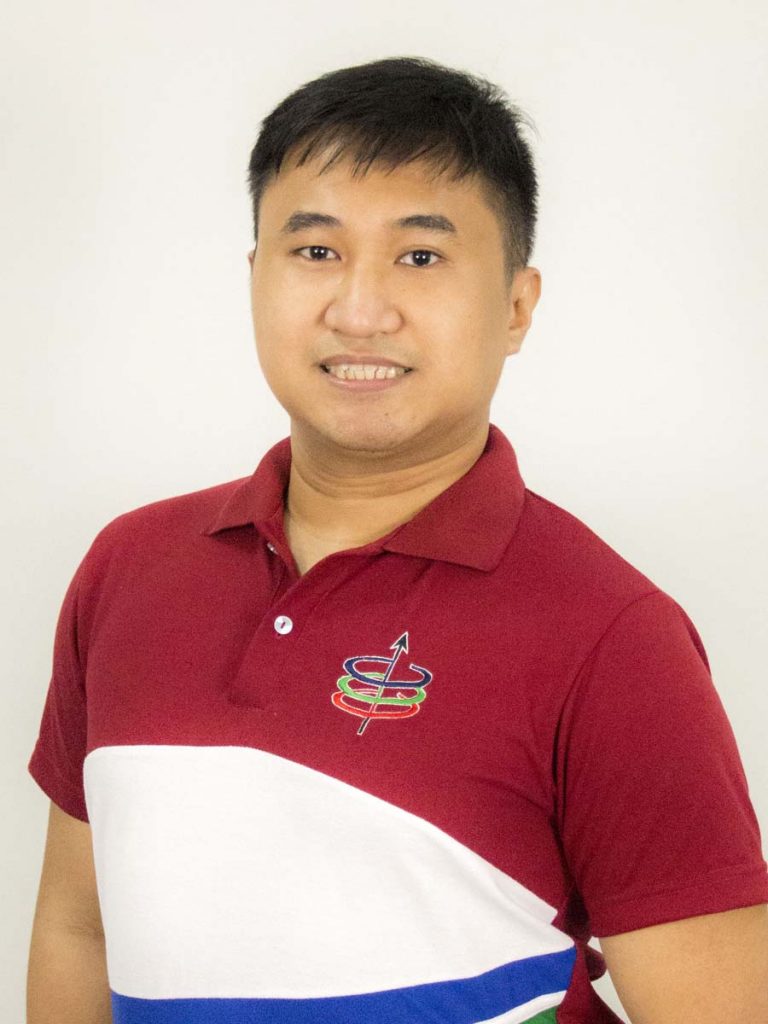NEIL IRWIN BERNARDO

Position: Associate Professor
Laboratory Affiliation: Wireless Communications Engineering Laboratory
Room: 402
Telephone Number: N/A
Email: neil.bernardo@eee.upd.edu.ph
Research Interests: Wireless Communications, Information Theory, Signal Processing
Educational Background:
PhD in Engineering, University of Melbourne, 2024
MS Electrical Engineering, University of the Philippines, 2016
BS ECE, University of the Philippines, 2014
Google Scholar; ORCID
Laboratory Affiliation: Wireless Communications Engineering Laboratory
Room: 402
Telephone Number: N/A
Email: neil.bernardo@eee.upd.edu.ph
Research Interests: Wireless Communications, Information Theory, Signal Processing
Educational Background:
PhD in Engineering, University of Melbourne, 2024
MS Electrical Engineering, University of the Philippines, 2016
BS ECE, University of the Philippines, 2014
Google Scholar; ORCID
Recent Publication/s:
- N. I. Bernardo, S. B. Shah, and Y. C. Eldar, “Modulo sampling with 1-bit side information: Performance guarantees in the presence of quantization,” in 2024 IEEE International Symposium on Information Theory (ISIT), 2024, pp. 3498–3503. DOI: 10.1109/ISIT57864.2024.10619324.
- M. T. Alonso, F. Shirani, N. I. Bernardo, and Y. C. Eldar, “Non-linear analog processing gains in task-based quantization,”in 2024 IEEE International Symposium on Information Theory (ISIT), 2024, pp. 1889–1894. DOI: 10.1109/ISIT57864.2024.10619674.
- N. I. Bernardo, J. Zhu, and J. Evans, “Learning Channel Codes from Data: Performance Guarantees in the Finite Blocklength Regime,” in 2023 IEEE International Symposium on Information Theory (ISIT), 2023, pp. 2129–2134. DOI: 10.1109/ISIT54713.2023.10206556.
- N. I. Bernardo, J. Zhu, Y. C. Eldar, and J. Evans, “Hardware-Limited Non-Uniform Task-Based Quantizers,” in ICASSP 2023 – 2023 IEEE International Conference on Acoustics, Speech and Signal Processing (ICASSP), 2023, pp. 1–5. DOI: 10.1109/ICASSP49357.2023.10094884.
- N. I. Bernardo, J. Zhu, Y. C. Eldar, and J. Evans, “Design and Analysis of Hardware-Limited Non-Uniform Task-Based Quantizers,” IEEE Transactions on Signal Processing, vol. 71, pp. 1551–1562, 2023. DOI: 10.1109/TSP.2023.3269911.
- N. I. Bernardo, J. Zhu, Y. C. Eldar, and J. Evans, “Capacity Bounds for One-Bit MIMO Gaussian Channels with Analog Combining,” IEEE Transactions on Communications, vol. 70, no. 11, pp. 7224–7239, 2022. DOI: 10.1109/TCOMM.2022.3208632.
- N. I. Bernardo, J. Zhu, and J. Evans, “On the Capacity-Achieving Input of the Gaussian Channel with Polar Quantization,”IEEE Transactions on Communications, vol. 70, no. 9, pp. 5912–5928, 2022. DOI: 10.1109/TCOMM.2022.3189700.
- N. I. Bernardo, J. Zhu, and J. Evans, “On the Capacity-Achieving Input of Channels with Phase Quantization,” IEEE Transactions on Information Theory, vol. 68, no. 9, pp. 5866–5888, 2022. DOI: 10.1109/TIT.2022.3174557.
- N. I. Bernardo, J. Zhu, and J. Evans, “On Minimizing Symbol Error Rate Over Fading Channels With Low-ResolutionQuantization,” IEEE Transactions on Communications, vol. 69, no. 11, pp. 7205–7221, 2021. DOI: 10.1109/TCOMM.2021.3102131.
- N. I. Bernardo, J. Zhu, and J. Evans, “Is Phase Shift Keying Optimal for Channels with Phase-Quantized Output?” In 2021 IEEE International Symposium on Information Theory (ISIT), 2021, pp. 634–639. DOI: 10.1109/ISIT45174.2021.9518094.
- A. Vidal, N. I. Bernardo, and J. J. Marciano Jr., “Cooperative Mobile Sensing for Dynamic Spectrum Access in Community Cellular Networks,” in 2019 International Symposium on Wireless Communication Systems (ISWCS), 2019, pp. 709–713. DOI: 10.1109/ISWCS.2019.8877126.
